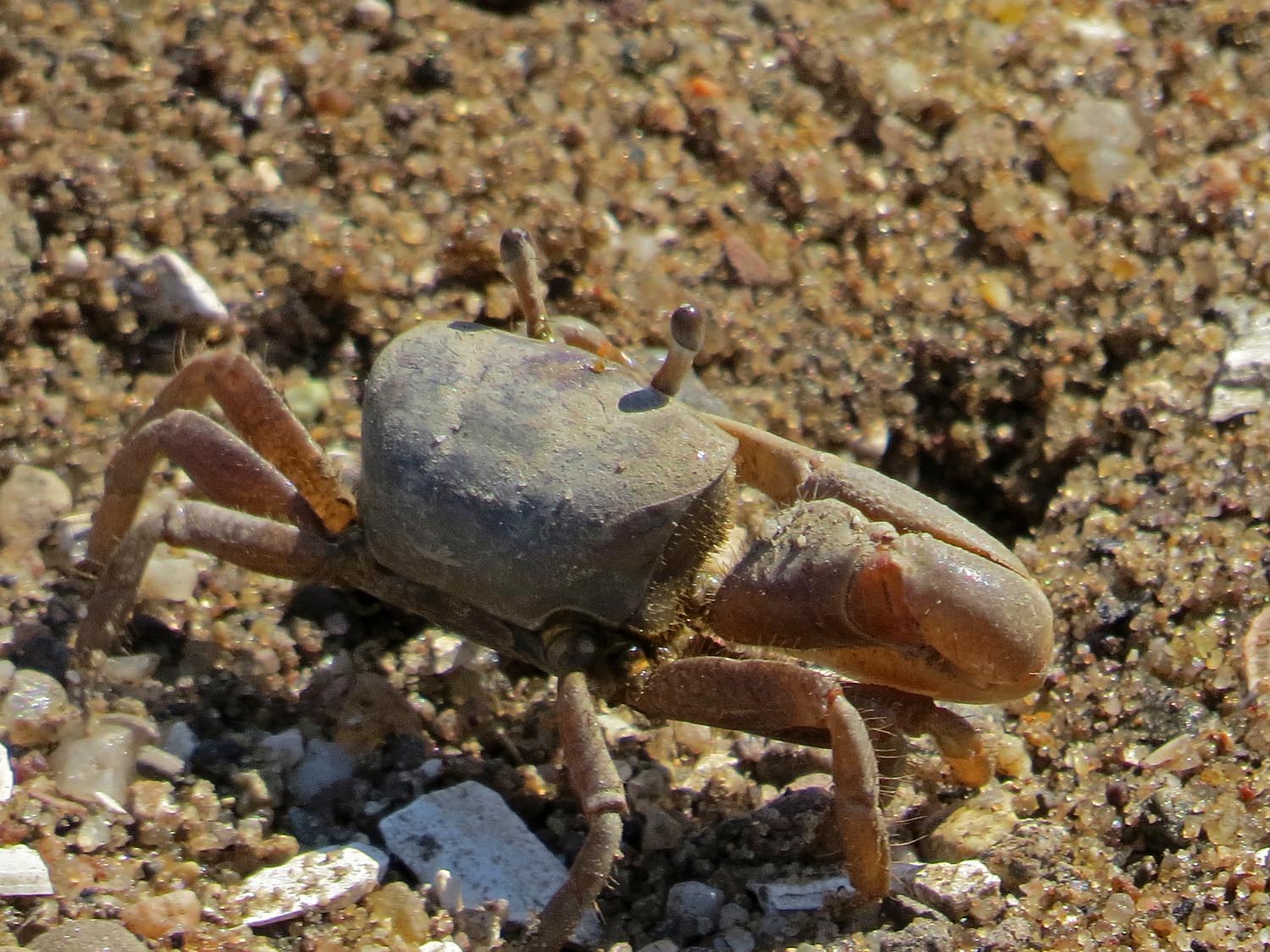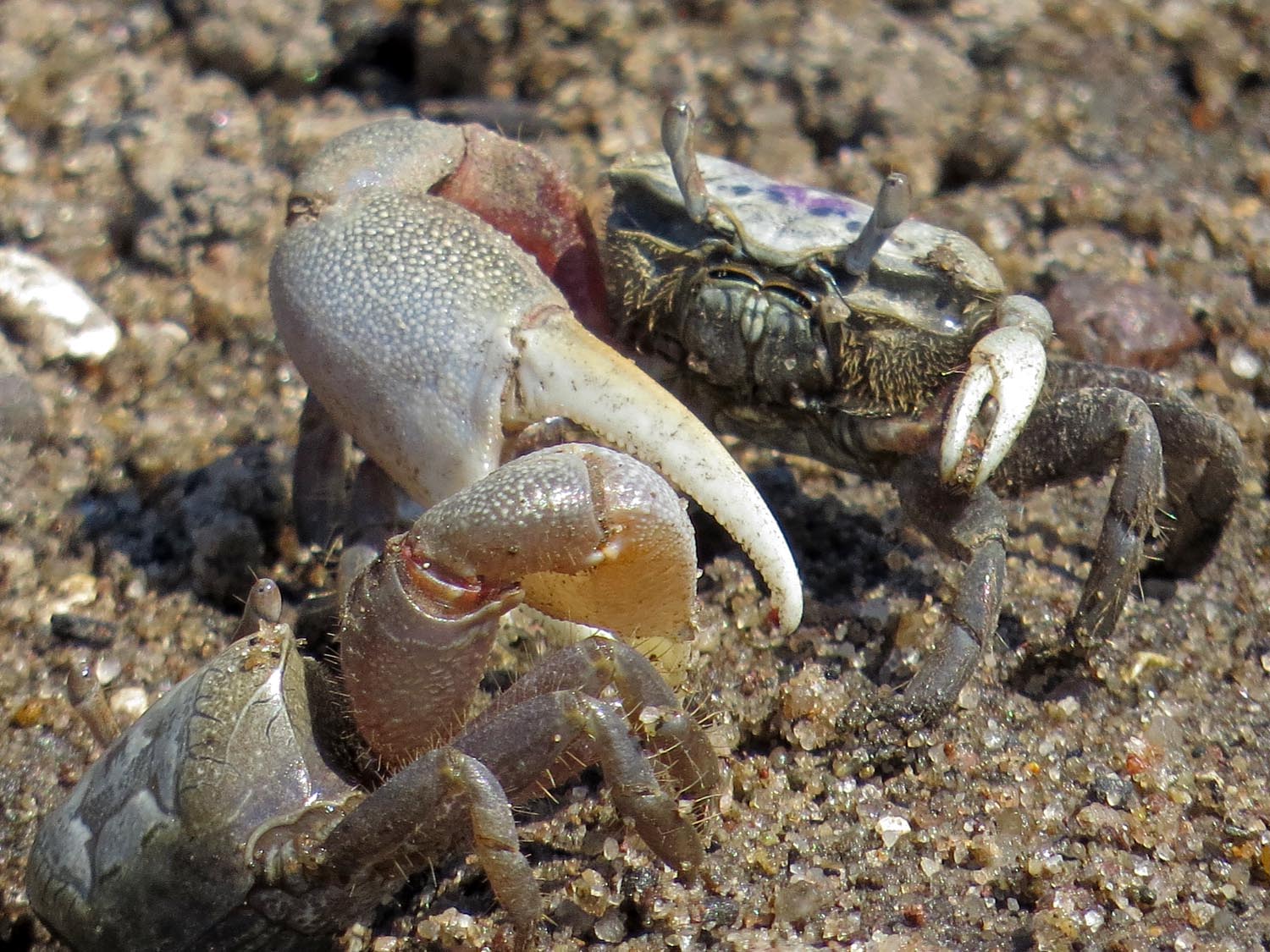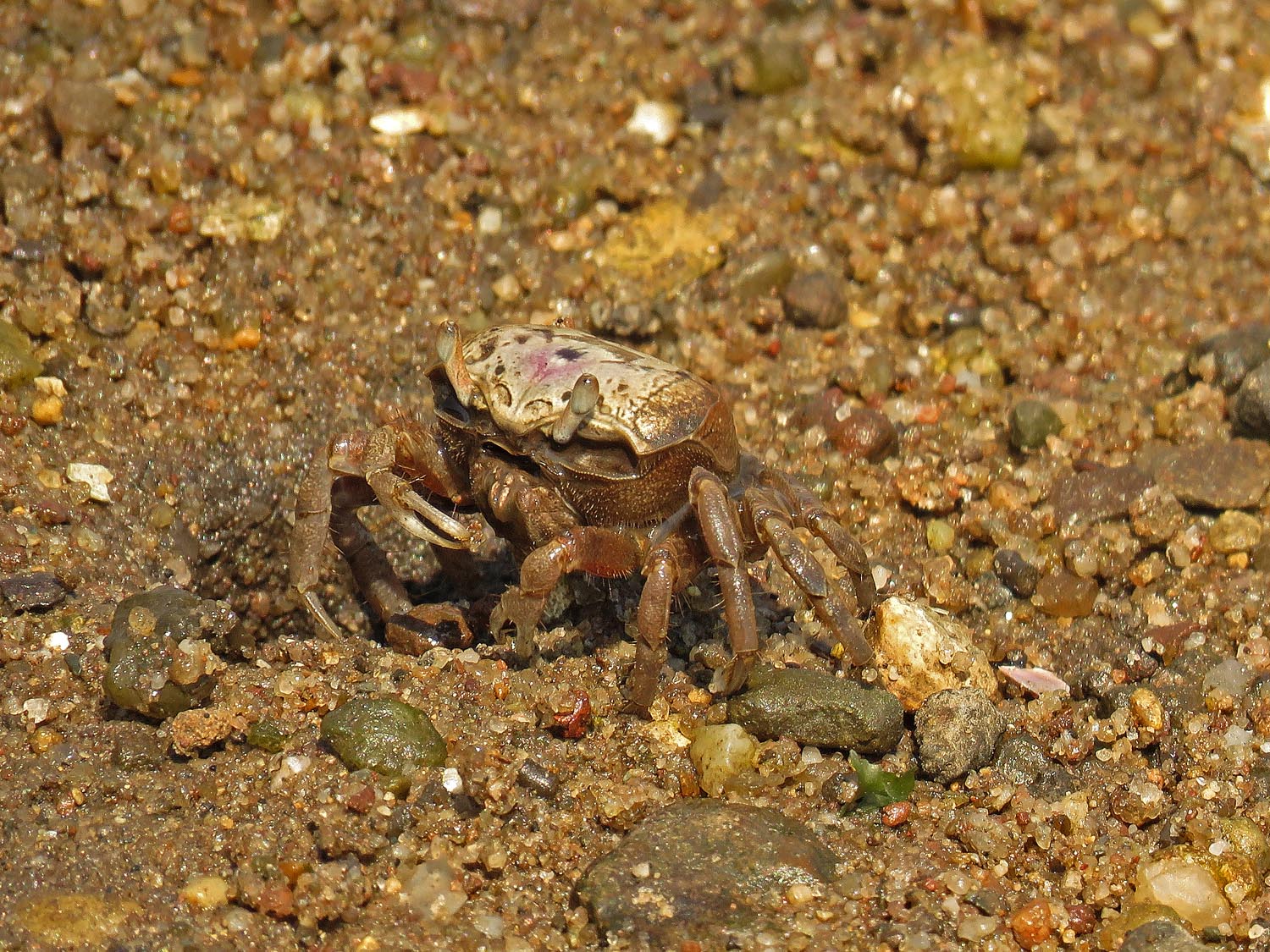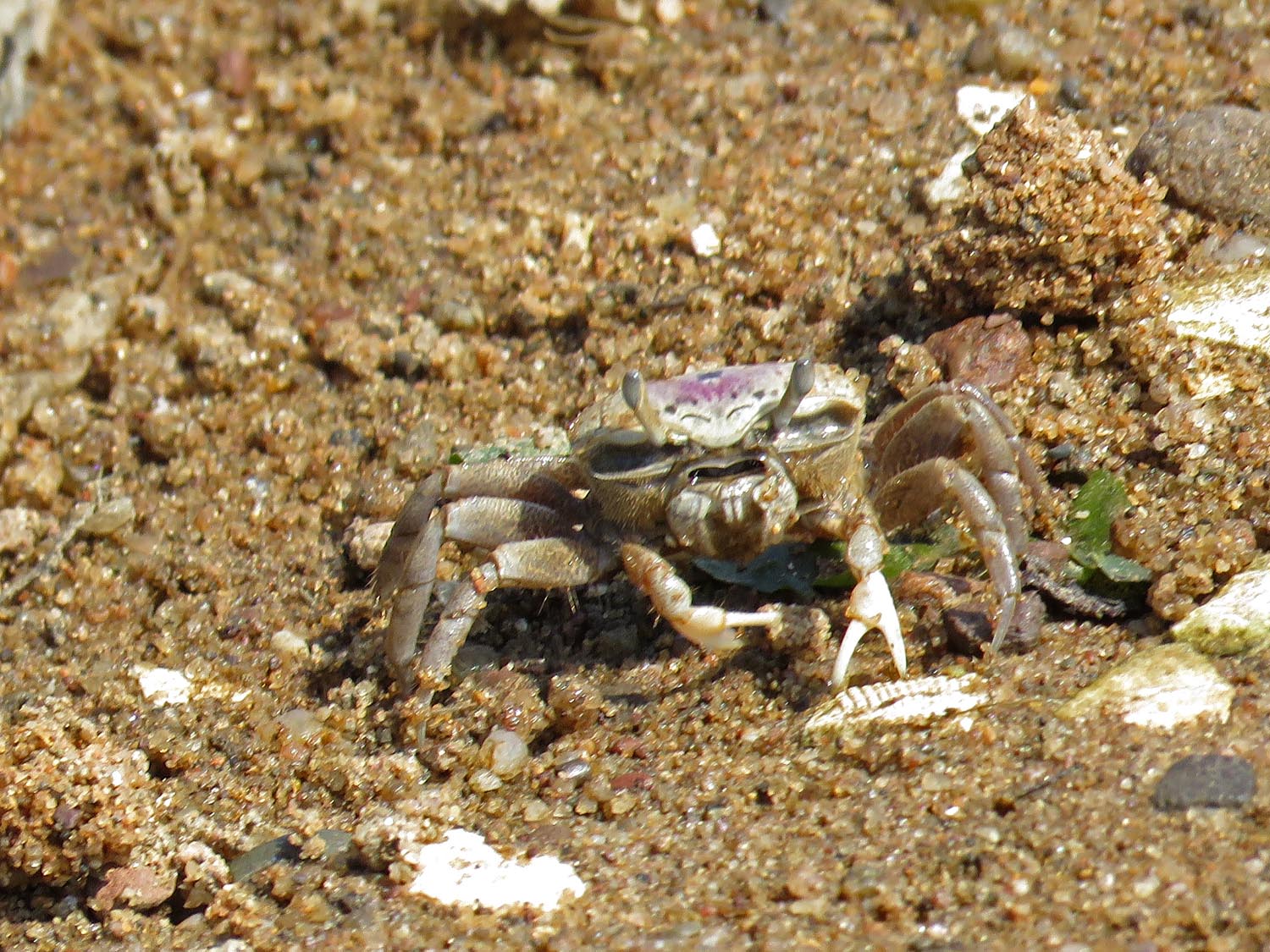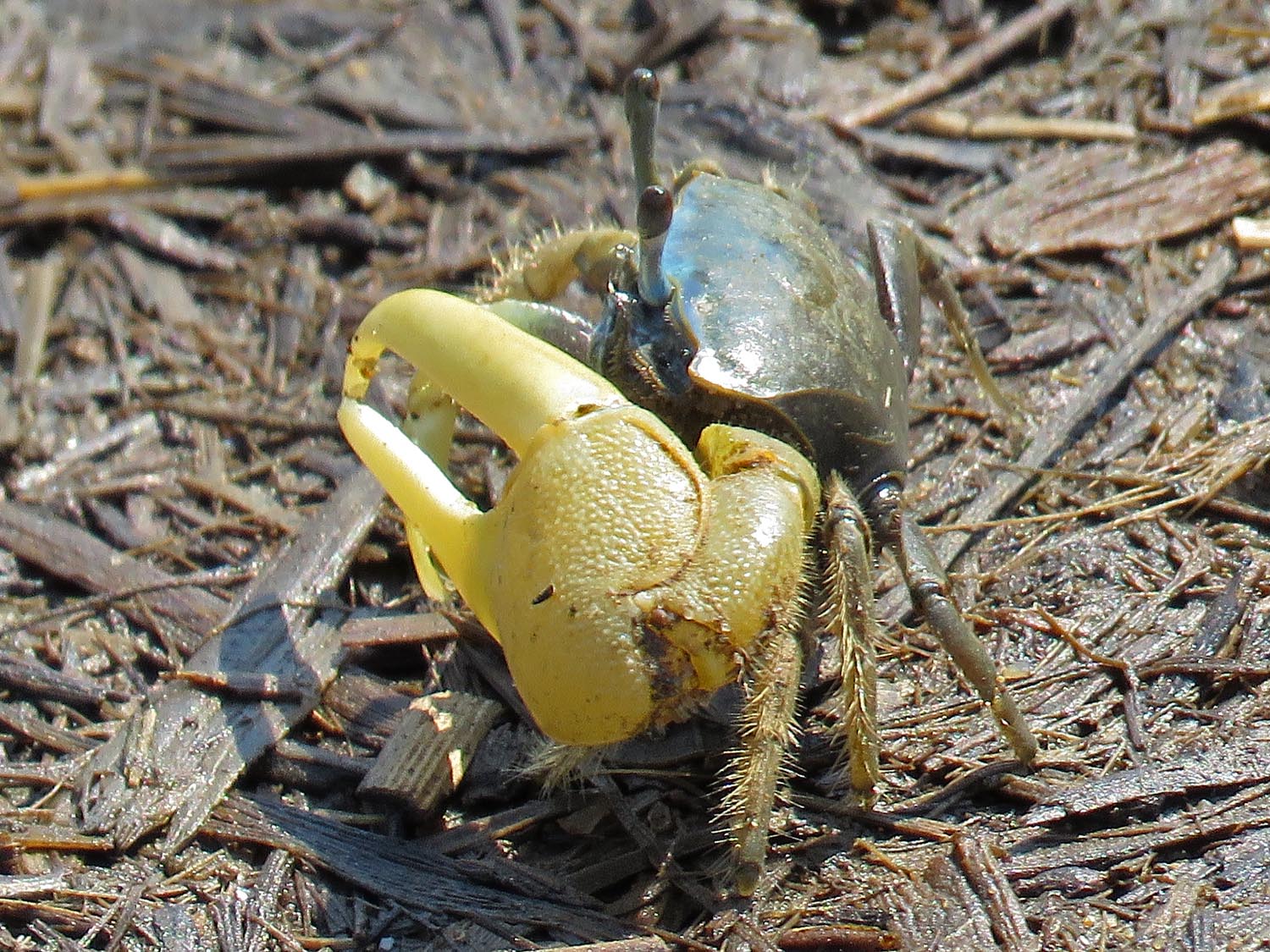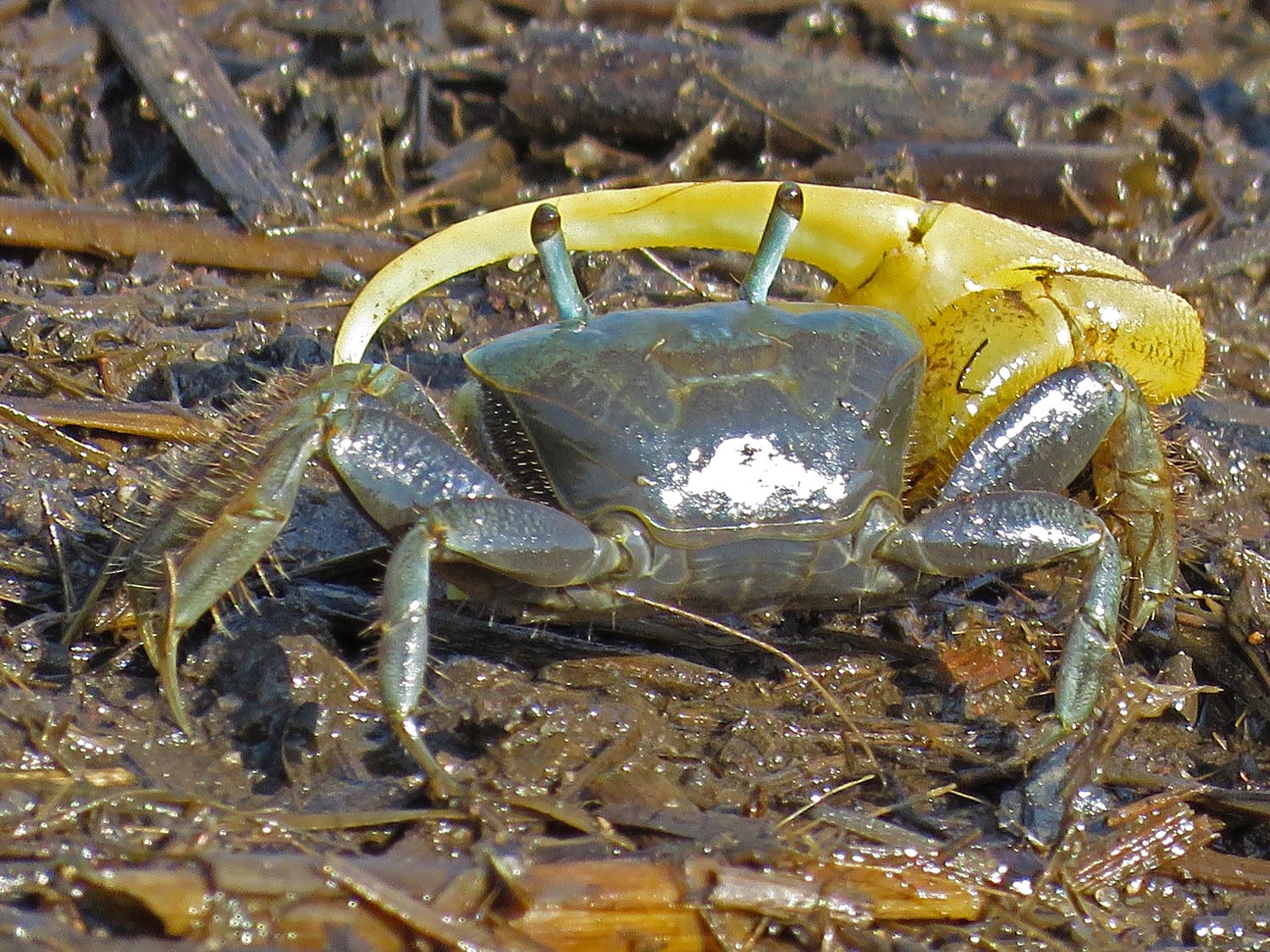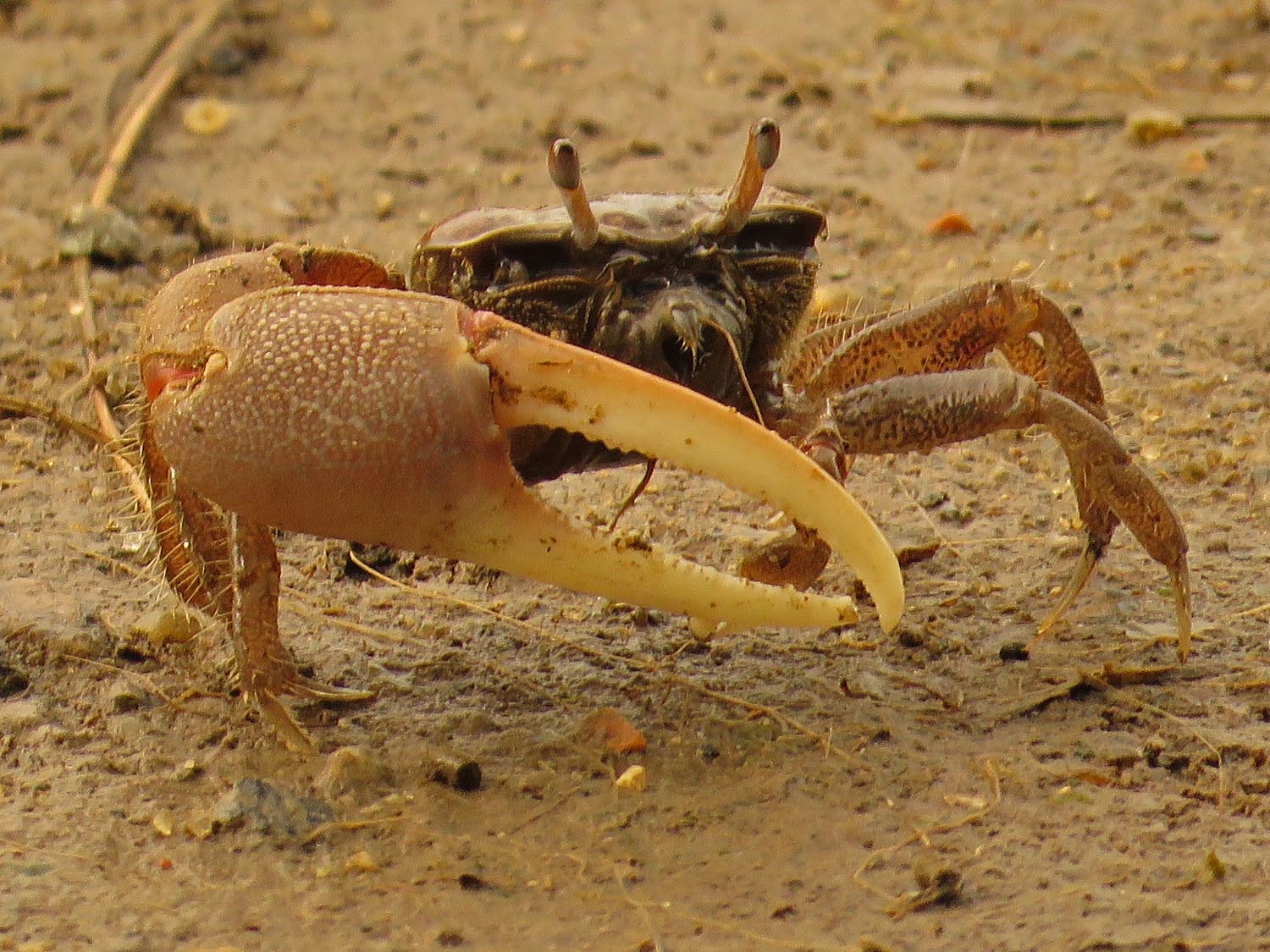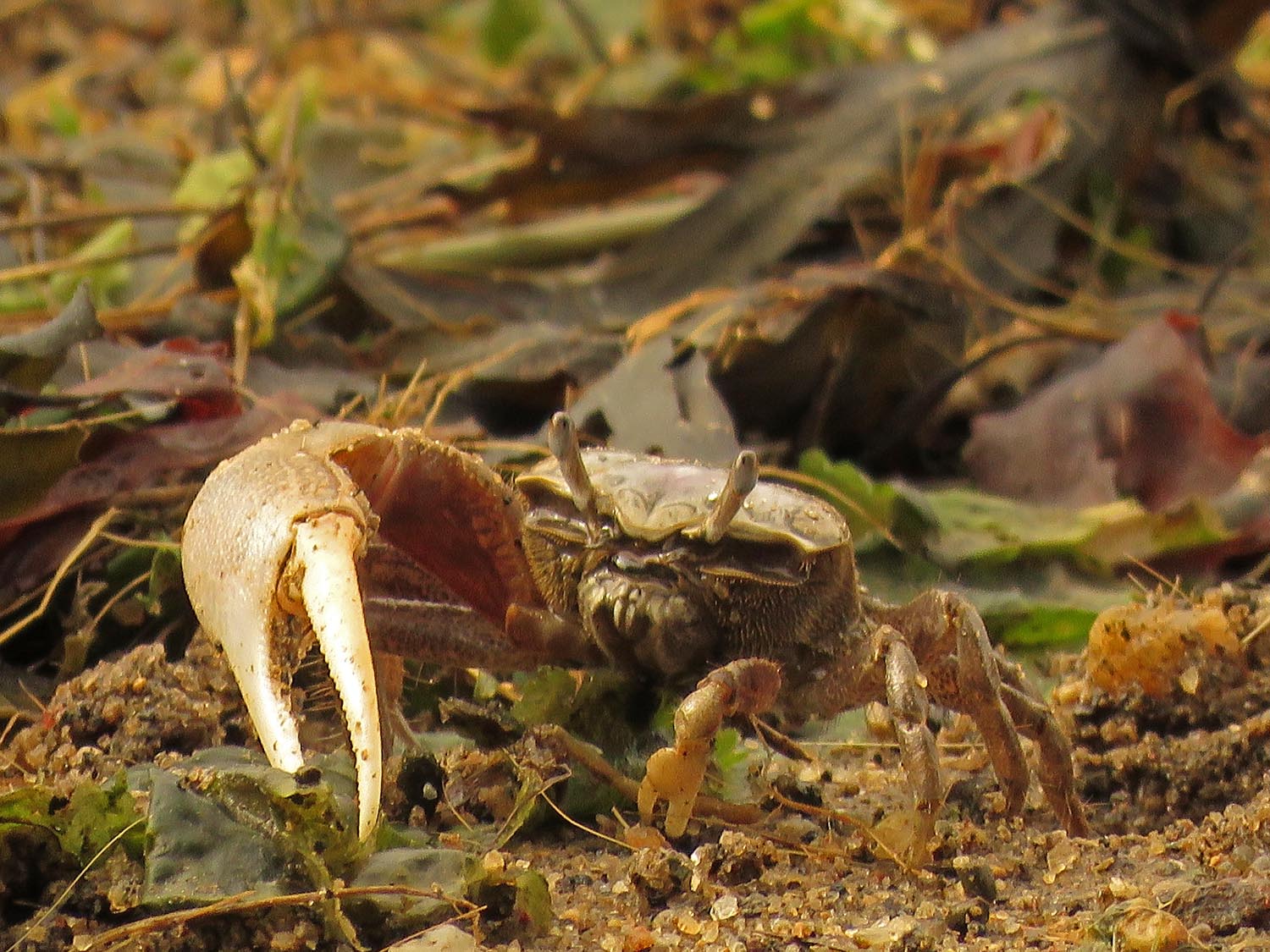Fiddler crabs, beetle-sized crustaceans of the genus Uca, scurry sideways along some of the beaches and intertidal mudflats of New York City. I've seen them in beach parks in Queens, Brooklyn and the Bronx. They climb in and out of small holes after the tide goes out, the males dragging their extra-large claws along with them (the females have equal-sized claws, the males have one large claw and a smaller claw). These crabs eat by using their smaller claws to shovel food in their mouths, capturing algae, microbes, fungus and other decaying detritus and returning what's left in small balls on the ground. Their beachcombing habits are thought to help preserve the wetlands by aerating the substrate.
Male fiddler crab, Hunter Island, Pelham Bay Park, near Orchard Beach, Sept. 20, 2017
The Fiddler Crab video is set to a violin sonata by Jan Brandts Buys, performed by Steve's Bedroom Band and obtained from MusOpen.org, a royalty-free music source. It shows these small crabs at Marine Park in Brooklyn, Broad Channel Park on Jamaica Bay in Queens, and Pelham Bay Park (Hunter Island, near Orchard Beach) in the Bronx on July 25, 2015, and August 22 and 31, and September 20 and 23, 2017.
More fiddler crab shots below. These are fascinating, though slightly creepy, animals. They do molt, shedding their shells as they grow. If a male loses the big claw, a new claw will grow on the opposite side after the next molt. You often see these reclusive crabs go hurrying into their holes, where they will stay after molting until the new shells harden.


